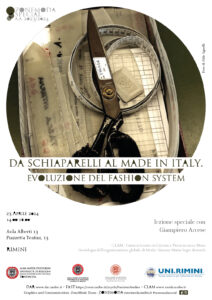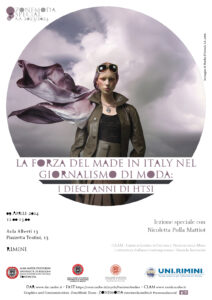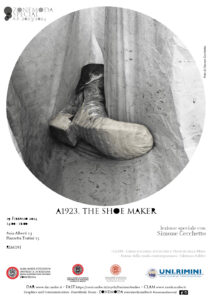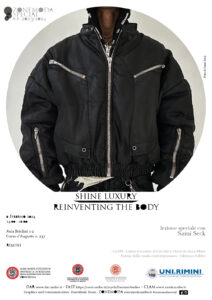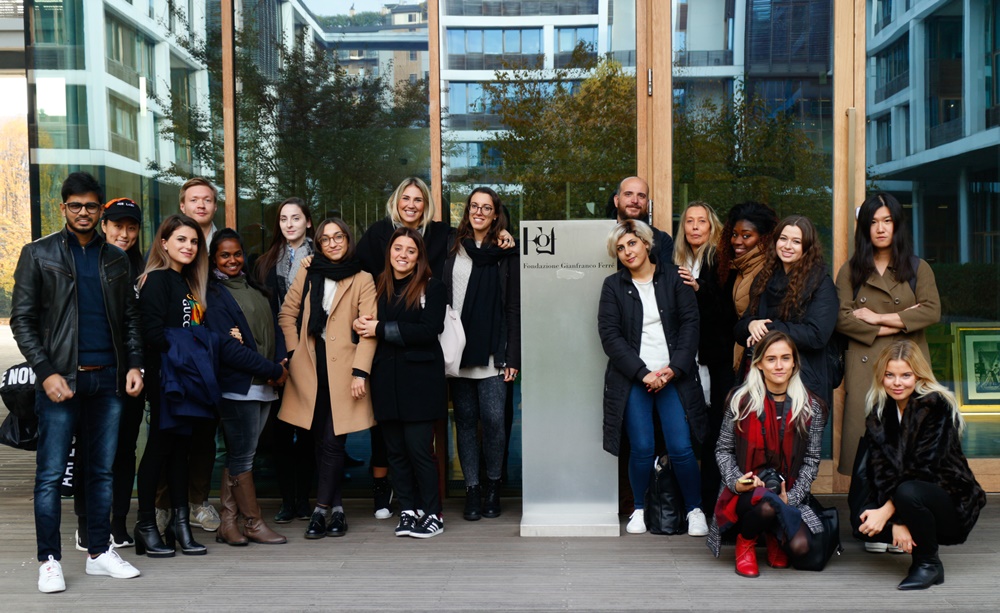
REPORT One day in Milan: a visit to the Italian Fashion Heritage

On Wednesday the 22nd of November, the attending students of Fashion Culture and Management from the course of History of culture and the collective imaginary (Prof. D. Calanca) took an educational trip to Milano to gain knowledge about Fashion Heritage Public History.
The day started in Milano at the ‘Fondazione Gianfranco Ferré’ which is in Via Tortona. The foundation is a wonderful hub filled with so much vital information, it is a nonprofit organization with the aim to work with young people in education to use this collection of material to offer the next generation a fruitful learning activity. Entering you are greeted with objects from Ferré’s home and office which they explained were both expensive and inexpensive it didn’t matter to him, they were collected from all over the world and had meaning to Ferré. The foundation felt that this would create an atmosphere that he would have enjoyed and create a personal connection for the visitor with the designer.
Our experience began with a presentation from Rita Airaghi the foundation director and chairperson. A proud distant relative of Gianfranco Ferré himself, she is very passionate about keeping his legacy alive. The staff of the foundation are empowered and keen to learn from professionals and professors from fashion fields to create the best and most accurate archive experience as possible.
The foundation holds the two types of sketches showing every look ever featured in the collections, one of them, catwalk exit sketches, shows a more artistic view, that describes the idea of the look, with movement and which he made notes about the model and he used in the runaway instead of photos. The other type of sketch is the technical, where he wrote all the details and specifications, including swatches of the fabric so the technical designers and pattern makers could understand and interpret his idea as accurately as possible. Most of the sketches are originals, the minority that is missing, you can see a photocopy version.
The archive is well structured and is easy to navigate if you know exactly what to look for (collections, segments, seasons). Searching in the system you can trace all the steps of a garments creation or even entire collections from the inspiration to the costumer. This could be helpful not only for academic researchers, students and historians, but also for any practicing designer.
For instance, to figure out how seamstresses achieved that level of craftsmanship one should look inside the dress, examine stitches, patterns assembly etc. This is the easy way to learn how initial ideas and orders of the chief designer were implemented through reading comments on the pages of technical sketches and sheets.
An extremely interesting part of the presentation was the explanation of the technical sheets. 200 have been done so far from 2000 in total. The first 60 were done by an expert in the field so that the foundation staff could better create the sheets in an effective way. These technical sheets contain everything you could ever want to know about each garment created under the Ferré name. From photos of the garment on the catwalk, press information, exhibitions it has featured in, magazine features, even celebrity wearers etc.
The chance to visit the foundation and delve into the archive was a great opportunity to see first-hand one of the only contemporary fashion archives in history. Rita is extremely happy for the archive to be aiding education and inspiring those who wish to view it.
The next stop on the trip was Palazzo Morando. It is a historical palace located in Milan’s fashion district with architectural features of the Italian baroque style. Palazzo Morando was previously a private house, and today serves as a museum for fashion garments and art collections. The museum mainly focuses on exhibiting the lifestyle of Milan between the 17th and 19th centuries. Upon entering the stairs made of marble and the banisters in Rococo style captured our attention.
Palazzo Morando is composed of rooms in various themes. In the Chinese galleria, there are different types of porcelain and ceramic vases. All of them are sophisticatedly painted and echo the patterns of the wallpaper. The Sala dell’Olimpo is designed by Giovanni Antonio Cucchi and dedicated to the wedding between Giovanni Villa and Maria Puestela, where a richly designed fireplace and an opulent chandelier are the most striking objects in this spacious room.
The entire space of Palazzo Morando evokes a sense of sumptuousness, typically the room of Salottino Dorato. The interior has richly golden decorations incorporated with many contemporary Rococo features. The walls are encrusted with gilded stucco ornamentation in various shapes like S-scrolls and C-scallops. They are also elaborately carved in the furniture. In Sala Egizia, the floor is made of mosaic ceramics, and they depict classical Egyptian characters. In Sala d’Ercole, the fresco on the ceiling painted by Giovanna Battista Ronchelli is eye-catching. It vigorously enhances the elegance of the room. Also, there came the corridor called La Galleria dei Busti, which literally explains the setting to display busts. These figurines are made of white marble with polished surface and being sculpted in a neoclassical way. Paintings on the walls are found in most rooms in the Palazzo. Generally, they are genre paintings that depict the scenes about daily life at that time, as well as portraits of famous civil residents through Milan’s history.
After our visit to Palazzo Morando we walked to quadrilatero della moda, which is the fashion district. There are boutique stores of luxury and fashion brands like Gucci, Dolce&Gabbana, Alexander McQueen, etc. so we could browse. At the end of the day we finished our trip with a visit to the Duomo and Galleria Vittorio Emanuele II.
Thanks to the kind staff at the ‘Fondazione Gianfranco Ferré’ and Prof. D. Calanca and Dott. G. Di Giangirolamo we all had a brilliant day filled with knowledge, culture and insight into Milan.
Involved students: Ali, Anton, Cecilia, Federica, Ingrid, Jiagi, Julia, Leticia, Lucilla, Maria Chiara, Mhairi, Milai, Mona, Natiga, Rustam, Samuela, Smitha.
Organized by: Prof. D. Calanca and Dott. G. Di Giangirolamo.
Special thanks to: Diana and Laura.
Ph credit: Mohammed Musharraf Ali Neranki, Anton Gårdeval, Rustam Ibraimov.

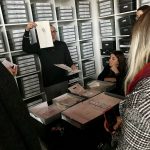
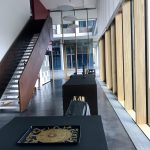
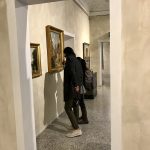
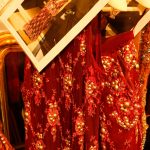
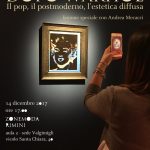 Previous Post
Previous Post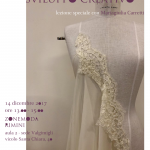 Next Post
Next Post